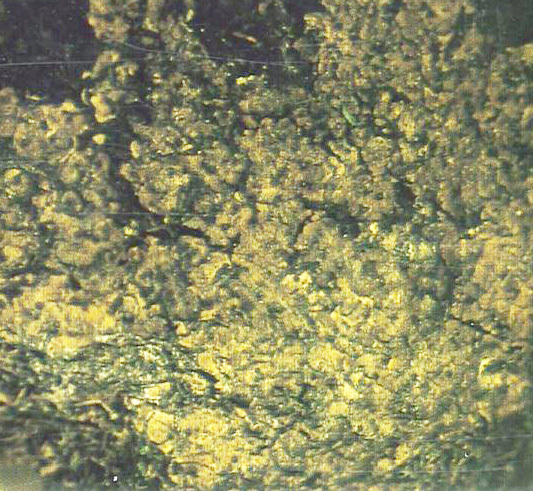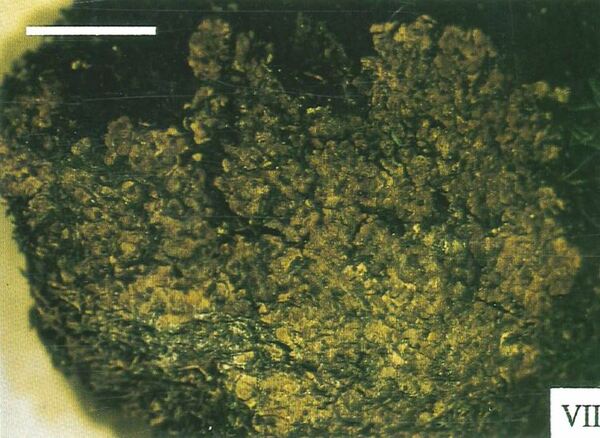Placidiopsis tiroliensis Breuss
Linzer Biol. Beitr., 21: 595, 1989.
Synonyms:
Description: Thallus squamulose, the squamules 0.7-3 mm broad, 0.25-0.4 mm thick, flattened, smooth, contiguous and densely aggregated, incised, the upper surface brownish, epruinose, the lower surface dark, attached by a dense mat of 4-5 μm thick, dark rhizohyphae. Upper cortex 10-20 μm thick, pseudoparenchymatous, with a thin to absent epinecral layer; medulla almost completely filled by algae; lower cortex poorly developed, more or less paraplectenchymatous. Perithecia globose, immersed in the squamules, to 0.3 mm across, without involucrellum. Exciple colourless only in very young perithecia, then dark throughout, of tangentially arranged, elongate cells; periphyses present around the ostiole, measuring 30-35 x 2.5-3.5 μm, interascal filaments absent; hymenial gel hemiamyloid. Asci 8-spored, clavate, thin-walled, I-, apically slightly thickened, with a small ocular chamber 65-75 x 17-22 μm. Ascospores 1-septate, not constricted at septum, hyaline, broadly ellipsoid, thin-walled, 13-17 x 9-11 μm. Photobiont chlorococcoid (Diplosphaera). Spot tests: cortex and medulla K-, C-, KC-, P-, UV-. Chemistry: without lichen substances.
Growth form: Crustose
Substrata: soil, terricolous mosses, and plant debris
Photobiont: green algae other than Trentepohlia
Reproductive strategy: mainly sexual
Commonnes-rarity: (info)
Alpine belt: very rare
Subalpine belt: extremely rare
Montane belt: absent
Dry submediterranean belt: absent
Humid submediterranean belt: absent
Padanian area: absent
pH of the substrata:
1 2 3 4 5
Solar irradiation:
1 2 3 4 5
Aridity:
1 2 3 4 5
Eutrophication:
1 2 3 4 5
Poleotolerance:
0 1 2 3
Altitudinal distribution:
1 2 3 4 5 6
Rarity
absent
extremely rare
very rare
rare
rather rare
rather common
common
very common
extremely common
Loading data...
Occurrence data
Predictive map
Growth form: Crustose
Substrata: soil, terricolous mosses, and plant debris
Photobiont: green algae other than Trentepohlia
Reproductive strategy: mainly sexual
Commonnes-rarity: (info)
Alpine belt: very rare
Subalpine belt: extremely rare
Montane belt: absent
Dry submediterranean belt: absent
Humid submediterranean belt: absent
Padanian area: absent
pH of the substrata:
| 1 | 2 | 3 | 4 | 5 |
Solar irradiation:
| 1 | 2 | 3 | 4 | 5 |
Aridity:
| 1 | 2 | 3 | 4 | 5 |
Eutrophication:
| 1 | 2 | 3 | 4 | 5 |
Poleotolerance:
| 0 | 1 | 2 | 3 |
Altitudinal distribution:
| 1 | 2 | 3 | 4 | 5 | 6 |
Rarity
absent
extremely rare
very rare
rare
rather rare
rather common
common
very common
extremely common
Loading data...
Occurrence data
Predictive map








